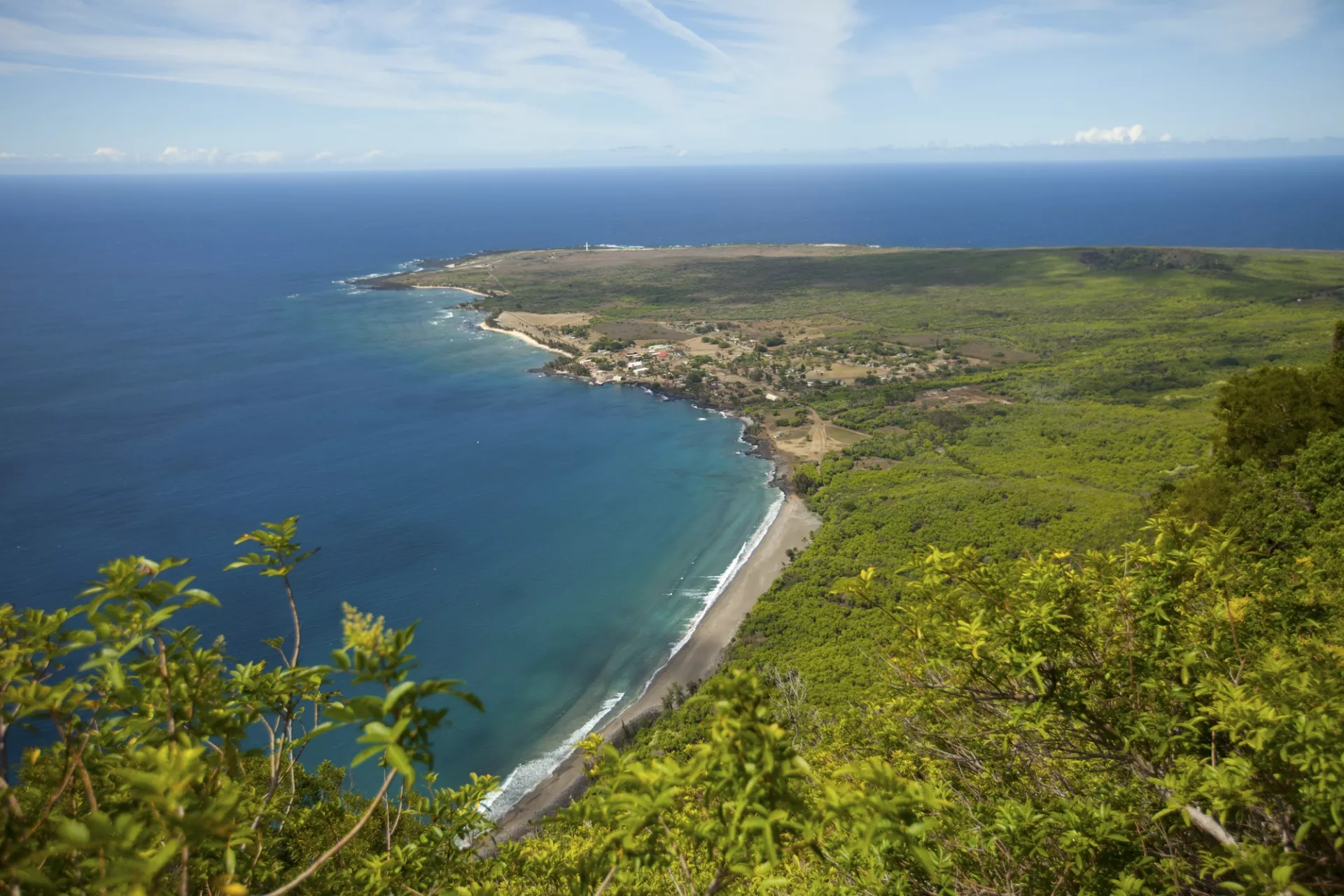
 Kalaupapa
Kalaupapa
Kalaupapa National Historical Park
What: Historic site
Where: On the northern tip of Molokaʻi
The sheer cliffs overlook the Pacific, descending from 1,700 feet with Molokaʻi's North Shore Pali just to the east—the tallest sea cliffs in the world as recorded by the Guinness Book of World Records, measuring 3,600 to 3,900 feet. Three miles, 26 switchbacks and 90 minutes of magnificent views later, you're back to sea level in the historic town of Kalaupapa, one of the most remote settlements in Hawaiʻi. It's scenic, isolated and peaceful here, but the story of Kalaupapa National Historical Park is even more compelling.
Thousands of Native Hawaiians were afflicted with Hansen’s disease at a time when there was no cure. In 1866, the first patients were forced under law into isolation on the Kalaupapa peninsula to prevent the spread of the disease. They formed new communities displacing the original residents and sought comfort and remedy from their ailments. Answering the call in 1873 was Belgian Father Damien DeVeuster. Intending on a short visit, Father Damien instead chose to leave the "outside world" to care for the residents. After 16 years of faithful service, he too, tragically succumbed to the disease and was laid to rest at historic St. Philomena Roman Catholic Church in Kalaupapa where you can visit his grave. In October of 2009, Father Damien was canonized as a saint for his selfless dedication.
A few months before Saint Damien's death, a woman of extraordinary spirit came to Kalaupapa in 1888 to continue his life's work. Mother Marianne Cope had been the head of her religious order, an accomplished hospital administrator at the St. Joseph's Hospital in New York, and oversaw several hospitals and care homes in Hawaiʻi. At Father Damien's request, she and her Franciscan sisters volunteered to live out their lives in the exiled community, operating the Boys' Home he established and the Bishop Home for Girls. The beloved Mother died in 1918 of natural causes. Her remains were buried on the grounds of the Bishop Home and returned to Syracuse, New York in 2005.
Mother Marianne was canonized as Saint Marianne Cope on October 21, 2012. A bronze statue in her honor overlooks the ocean at Kewalo Basin Park in Honolulu.
A cure for the disease was discovered in the 1940s and in 1969 the law was repealed. Today, the serene Kalaupapa National Historical Park is a place of rich history and culture. Hawaiʻi State Law requires all visitors to secure a permit prior to entering Kalaupapa National Historical Park.
In the past, visitors were able to obtain permits by booking a reservation with a guided tour company. Park staff are working closely with the Hawaii State Department of Health staff to welcome a limited number of visitors to the park again. Currently, there is no active permitted tour operator, and no tours are available at this time. Please visit the website for updates and more information at Kalaupapa National Park site.
You can also view Kalaupapa Peninsula from the 1,000-foot elevation of Pālāʻau State Park. This 34-acre recreation area offers winding trails among eucalyptus and ironwood trees as well as breathtaking views of Molokaʻi's north coast.
